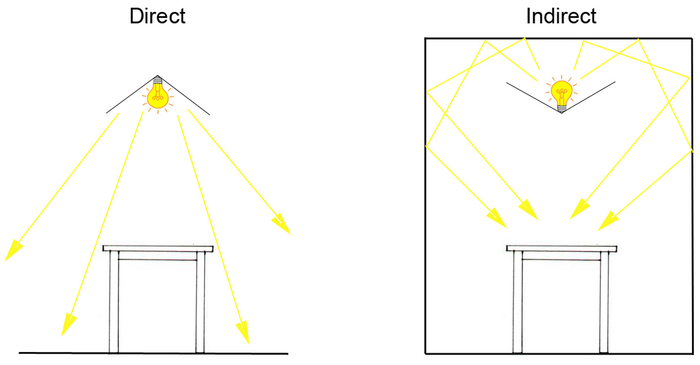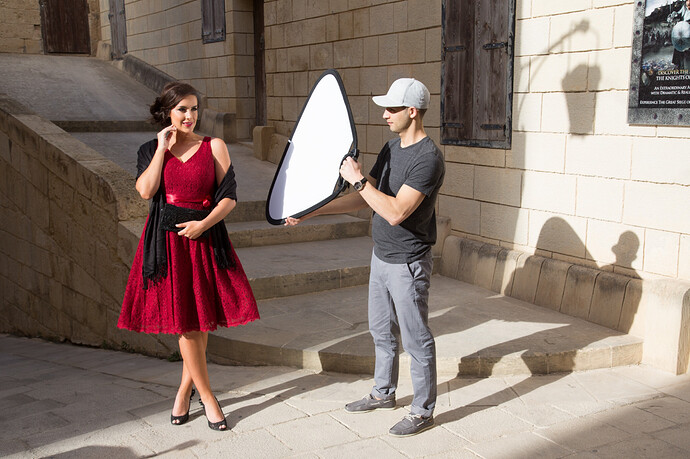Hi everybody! I was wondering if anyone can share any tips for making the best videos for instagram, etc, of our gear. I’m clueless on what kind of webcam and other equipment is best to create more pro video recordings of what we do with our setups. I see people post beautifully captured patterns and improvisations and I would really like to make mine look (and sound) as good as those. Also what’s the best video editing software, if there is any other than Premiere or Vegas, that could deliver fast and good results. Just using a good phone doesn’t seem to get there… Thank you!
Hey, I don’t know if this will help but I remember there was some discussion about filming your jams? If you want to check it out, this is the link to the thread:
I think it depends on your ultimate objective because some people seem to get pretty good results out of phones using those extendable bending mount arms, or even less complicated setups for strictly “overhead” looking down type filming.
I don’t do a lot of this so I don’t have much advice but hope that link helps or someone else has some good practical experience to share, good luck!
Many thanks for your insight! I’ll check the thread!
For video recordings, you can now use almost any current mobile phone.
The picture quality is sufficient.
Please use ‘Overbridge’ for audio.
Audio recordings with a microphone are usually terrible (the clicking of buttons, room ambience, microphone quality, poor monitor speakers, and other background noises…).
There is plenty of free software available for editing.
Check google and then try it out.
Thanks! I’ll search for a USB-C dongle for recording line-in audio directly to the phone for better spontaneous story posting when you get inspired. I guess this exists…
I believe (depending on your device) some apple products require a camera kit, but that this can be accomplished. Are you using an iphone/ipad or an android type device?
Another thing that comes to mind, is that if you’re looking for better overall results, you may need to consider an overlay of some sort for your table - whether it be a plain board, or a tablecloth of whatever color contrasts best with your devices - as well as some type of refractive surface similar to a large white sheet of paper which can be mounted opposite of your light source (also consider your light source) because in the film industry, they use large reflectors to distribute light more naturally without the glare of direct lighting.
Not this specifically, but this is the general idea of direct vs indirect.
or how this person is holding a refractor at a photo shoot.
Not necessarily for this level of complication, but it helps to think about the way other industries use these techniques for better results with the equipment you already have.
Thanks, I’ve considered a LED ring for lighting, and already have a flexible phone mount. I’m using a Samsung A54 with a decent camera. I guess lighting is what’s failing. Also would be awesome to get a stereo line in directly to the phone but I’m having a hard time to find a dongle that specifies a stereo input. Descriptions talk about a mic in but it’s never clear if it is mono or stereo.
I’ll see if I can find a video for you with an example of that, I think it can be done, but it depends on if you want stereo mic audio or a stereo signal over usb audio like what elektron puts out when sending usb audio to a computer.
This is how you an do it with a direct stereo signal (not usb) by going TRS line in to a zoom h1 (or similar) and sending to your device utilizing the recorder’s audio interface function. You could also use the recorder’s built-in mics but for your purposes that would yield worse results so you would want to go TRS into the line in.
This is essentially the same using a different type of audio interface, so maybe if it’s a digitakt or other device that acts as an audio interface, you may only need to use these steps and see if it can record the external audio directly after selecting it as your audio source.
You can use a USB-C to USB-B cable and connect direct from “Elektron” to your phone to record the audio.
Not mine, but i know this is recorded directly on a Samsung and uploaded ![]()
He use the Analog Heat as the final audio interface.
When in record from my Elektron boxes I use a usb-a to lightning adapter since I have an iPhone 14 and yes it works great. Usually I need to higher the gain because the volume from usb can be quite low and I use CapCut for that and it works great. Octatrack is the only Elektron box that is missing an usb-audio interface and in this case I use a Teenage Engineering TX-6 (expensive but great) to send audio directly to my phone. 
Depends on what your goal is. If you need to trim and put together clips and you don’t want to get into colour grading and the like, Apple’s humble iMovie is great and fast. It has basic transitions (e.g. fade to black, fade from one clip to another) and impressive stabilisation.
I get that Premiere can seem intimidating at first, but the learning curve really isn’t that steep. If you plan to make videos in similar lighting conditions you can create a template in Premiere and just paste your next video on your template’s edits. It also has audio effects like compression, limiting etc.
As far as filming goes, phone quality is more than enough now. Learn your phone’s camera though. Lock your exposure for example ![]()
And lock the focus!
Any modern phone should be able to produce good results - though a lot of making good video is lighting and camera control.
As a general rule, you’ll get better results out of the camera with more light.
Unfortunately I cannot offer specific recommendations for Android, but using a camera app that allows for full manual control really helps with getting consistent/good results once you learn it.
Being able to lock the white balance, shutter speed, frame rate, and focus, can make a big difference.
And getting the frame rate/shutter speed just right is important for avoiding flickering screens/LEDs when filming synths.
On iOS, my go-to app is still Mavis Pro Camera because it’s one of the few that offers the fine control over shutter speed that you need to minimize flickering.
It’s an older app now and doesn’t support all the latest recording formats (like ProRes Log) but that manual control and the clear scopes it offers makes up for it in my opinion.
As a free option, there is also the Blackmagic Camera app. This offers most of the controls you would want, and supports all the new recording formats; but it only offers rounded values for the shutter speed.
.
For audio, the Digi boxes have USB support - so I connect them directly to my phone and use that as the audio source.
All you need is the right USB cable/adapter.
.
For video editing, I recommend the free version of DaVinci Resolve.
The interface might seem a little intimidating at first, but this is a pro-grade app (the studio version is used in Hollywood productions) that can do as much or as little as you need, and there are a lot of guides for it out there.
Capcut all the way for editing. Free, intuitive, fast and incredibly powerful.
Do you have any advice on that? I am doing youtube videos jams but mainly focus on the sound so the video part is terrible…
For video editing I recommend Davinci Resolve. It’s professional grade software but they have a very capable free version. Might look intimidating at first but I think it’s fairly intuitive (however I did study film editing in university so there’s that…).
You could make do with a much more lightweight software but again, it’s free. And there’s room to grow with it.
EDIT:
Haha, continued reading the thread and saw someone else say the same almost word for word, sorry!
You’d need to sync your camera’s frame rate/shutter speed to the screen’s refresh time. If I’m not mistaken, Elektron’s screens have 60Hz refresh rate, so if you set the camera’s shutter speed to 1/60 or 1/30 you shoud be ok.
However, the rolling shutter problem persists when you’re filming from an angle.
The main thing is to get a camera app that gives you manual control over the settings - because then you can adjust them one at a time to see how it affects the look of your video.
Having your camera fixed on a tripod/arm can help too - both for filming, and for experimenting with lighting etc to see how things look.
Trying to avoid flicker is all about how much of a perfectionist you are.
Unfortunately it’s a tedious process of adjusting the settings until it looks right (and then saving that as a preset!).
The easiest way I have found is to defocus the camera when it’s pointing up close to the screen, and then adjust the shutter speed until the image is stable (or as good as it will get).
I never did find ideal settings for filming Elektron devices, but think I settled on 50 FPS with a 1/109s shutter.
This old 60 FPS test of mine shows how even slight changes in the shutter speed affect how the screen looks - but note that the button LEDs are always flickering badly because 60 FPS was not a good fit:
The Microfreak was easier.
The display seems to update at 78Hz, while the LEDs refresh at 50Hz (or some multiple of it).
So a combination of 50 FPS with 1/78s results in things being completely flicker-free:
You can also try multiples/divisors - like 25 FPS rather than 50 FPS, if you prefer how that looks.
In general, slower frame rates and slower shutter speeds are less likely to show flicker - but they change how the video looks.
Lighting conditions may limit what settings you can use though.
If you are filming in bright sunlight, you will not be able to use a slow shutter speed (at least without putting a filter over the camera) - which causes the screens to look like they do in this video:
(Not a criticism! Just the first video I remembered looking like this.)
Most people don’t care about it looking polished professional. But what they do care about is poor lighting and sound. So basically a crap camera will do. Nikon have released some great blogging cameras for youtube last year or so. Even Iphones or whatever get the job done these days.
Thanks a lot ! It will help








